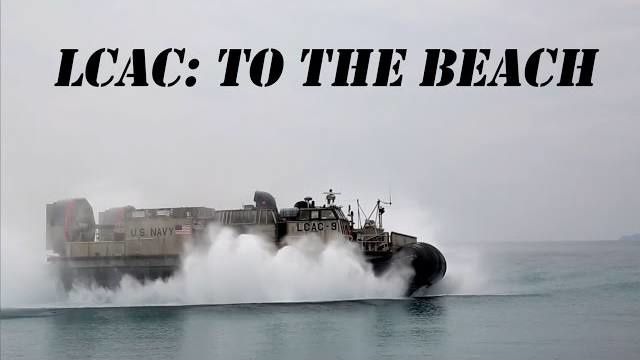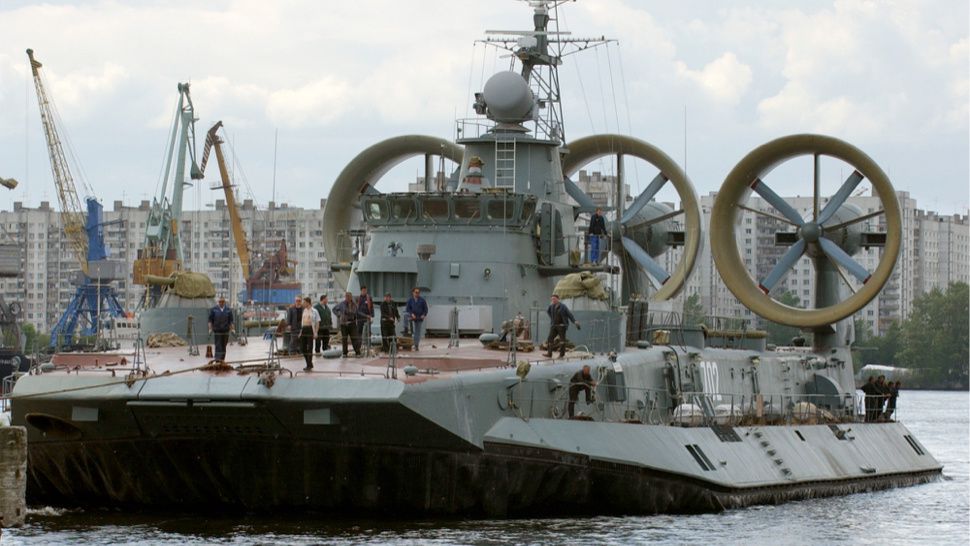6 mars 2015
5
06
/03
/mars
/2015
17:35
6 mars 2015 US Navy
KIN BLUE, Japan (Feb. 12, 2015) Landing Craft Air Cushion transporting Marines and equipment from the USS Bonhomme Richard (LHD 6) to White Beach and Kin Blue, Okinawa, Japan. The LCACs are with Naval Beach Unit 7, USS Bonhomme Richard (LHD 6). The Marines are with the 31st Marine Expeditionary Unit and are currently conducting Spring Patrol 2015. (U.S Marine Corps video by Cpl. Abbey Perria/Released)
13 février 2015
5
13
/02
/février
/2015
17:35
13 February 2015 Pacific Sentinel
An agreement is thought to have been reached between Russia and China under which the former will construct Zubr-class air-cushioned landing craft (LCAC) in China. This much is assumed from a piece entitled "Russia Steals an International Defense Contract from Ukraine" on Russian online news site Vzglyad.
The contract was originally signed by China and Ukraine. The ships were to be constructed at Feodosiya Shipyard in Ukraine under an agreement with the state-owned Ukrainian Defense Industry, according to a Russian shipbuilding industry source cited in the article. Now, it seems, Russia's state-run Rosoboronexport will be responsible for the project.
Ukraine does not have exclusive rights to build and sell the air-cushioned craft, as the technology belongs to Russia, according to the online paper. In order to prevent protests from Russia, Ukraine made slight adjustments to the landing craft and renamed it the Project 958 Zubr LCAC from its previous designation of Project 1232.2. Under the terms of the contract, last spring Ukraine delivered two of the craft to China.
Read the full story at Want China Times
5 janvier 2015
1
05
/01
/janvier
/2015
08:35
The Chinese Navy has put their money where their mouth is when it comes to their interest in the world's largest hovercraft. They have already bought two giant Zubr Class hovercraft from Ukraine, and are building two in China. Apparently four of these mammoths are not enough in the short-term, as China has now purchased Greece's entire inventory of Zubr Class hovercraft outright.
The story of the Soviet-era Zubr Class, how Greece, a NATO country, ended up buying them in the first place and how and why China got their hands on the design is a pretty amazing story, one you can read all about here. But what is most eye opening is that Greece is selling China a unique 'access' capability, one that could have a large impact on other NATO friendly countries in the Pacific region.
Read more
12 juin 2014
4
12
/06
/juin
/2014
11:20
photo P.Dagois -Marine nationale
Entrainement opérationnel LCAC et V22 de l'US NAVY sur Bâtiment de Projection et de Commandement.
3 juillet 2013
3
03
/07
/juillet
/2013
08:20
7/1/2013 Strategy Page
Camels rest in the sun as a landing craft, air cushion vessel assigned to the USS Kearsarge (LHD 3), transports light armored vehicles and Humvees assigned to the 26th Marine Expeditionary Unit (MEU), to Arta Beach in Djibouti, Africa, May 27, 2013. The 26th MEU is a Marine Air-Ground Task Force forward-deployed to the U.S. 5th Fleet area of responsibility aboard the Kearsarge Amphibious Ready Group serving as a sea-based, expeditionary crisis response force capable of conducting amphibious operations across the full range of military operations.(U.S. Marine Corps photo by Sgt. Christopher Q. Stone, 26th MEU Combat Camera)
6 juin 2013
4
06
/06
/juin
/2013
11:20
6/1/2013 Strategy Page
GULF OF ADEN (May 30, 2013) A landing craft air cushion (LCAC) enters the well deck of the amphibious assault ship USS Kearsarge (LHD 3). Kearsarge is the flagship for the Kearsarge Amphibious Ready Group and, with the embarked 26th Marine Expeditionary Unit, is deployed supporting maritime security operations and theater security cooperation efforts in the U.S. 5th Fleet area of responsibility. (U.S. Navy photo by Mass Communication Specialist 2nd Class Corbin J. Shea)
2 juin 2013
7
02
/06
/juin
/2013
11:20
6/1/2013 Strategy Page
GULF OF ADEN (May 30, 2013) A landing craft air cushion (LCAC) enters the well deck of the amphibious assault ship USS Kearsarge (LHD 3). Kearsarge is the flagship for the Kearsarge Amphibious Ready Group and, with the embarked 26th Marine Expeditionary Unit, is deployed supporting maritime security operations and theater security cooperation efforts in the U.S. 5th Fleet area of responsibility. (U.S. Navy photo by Mass Communication Specialist 2nd Class Corbin J. Shea)
23 avril 2013
2
23
/04
/avril
/2013
16:18
April 19, 2013: Strategy Page
Thirteen years ago the U.S. Navy decided to refurbish its LCACs (Landing Craft Air Cushion), to extend their useful life from 20 to 30 years. The actual work began in 2005, and so far 30 LCACs have gone through the refurbishment, are in the midst of it, or scheduled for the work, at a cost of about $9 million each. Seven LCACs are currently going through the process. Another 72 are in service, ten are in reserve (as replacements), and two are used for R&D. It will take more than a decade to complete the process.
The refurb replaces engines (or extensively upgrades those that don’t need replacement), replaces corroded structural components, and installs new electronics and other support equipment. All that and a paint job and the refurbs look like new but much improved. The upgraded LCACs are easier to maintain and have better and more reliable performance.
The first LCAC was built in 1984, the latest in 2001. The craft entered service in 1987. LCACs can carry 60 tons, at 70 kilometers an hour, over 350 kilometers from the large amphibious ships they are based on. The major advantage of the LCAC is that it can quickly move over marshes and other coastal obstacles. In this way LCACs (which can carry an M-1 tank) can land troops on 70 percent of the coastline in the world, versus only 17 percent for conventional landing craft.













